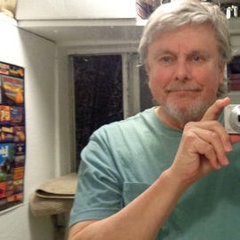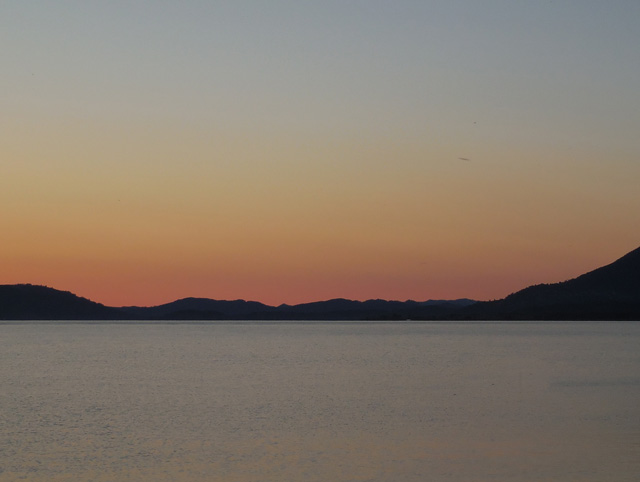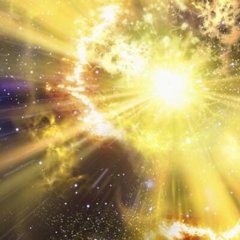-
Content count
2,728 -
Joined
-
Last visited
-
Days Won
8
About Mark Foote
-
Rank
Plum Cuckoo
Recent Profile Visitors
14,079 profile views
-
I can understand that Maddie did not see any point in continuing a conversation with Salvijus. Salvijus, I would suggest that offering personal experience would be more conducive to advancing a practice than debating angels or devils on the heads of pins. Feelings are complex, my feelings on the topic are complex. Maddie has offered a chance to dive into that.
-
My favorite band, in the '80's:
-
Salvijus--keep this in mind: Being intersex is a naturally occurring variation in humans, and it isn’t a medical problem — therefore, medical interventions (like surgeries or hormone therapy) on children usually aren’t medically necessary. Being intersex is also more common than most people realize. It’s hard to know exactly how many people are intersex, but estimates suggest that about 1-2 in 100 people born in the U.S. are intersex. There are many different ways someone can be intersex. Some intersex people have genitals or internal sex organs that fall outside the male/female categories — such as a person with both ovarian and testicular tissues. Other intersex people have combinations of chromosomes that are different than XY ( usually associated with male) and XX (usually associated with female), like XXY. And some people are born with external genitals that fall into the typical male/female categories, but their internal organs or hormones don’t. (https://www.plannedparenthood.org/learn/gender-identity/sex-gender-identity/whats-intersex)
-
It's complicated. There was a study done on why poor people living on welfare in the USA would vote for politicians who declared flat-out that they were going to end those welfare benefits. The answer turned out to be the fear in those same poor people of becoming the racial minority in their state, and the politicians who promised to cut off welfare were also the politicians who promised to keep down the minority. I guess I can understand the fear that's at work there. Just look at what the racial majority did to the racial minority in some states, and you can see why the majority would fear becoming the minority!
-
The body produces estrogen from fat cells, so there is still estrogen in a woman's body after menopause. Not as much, granted. What there is not, is progesterone. Many of the effects you mentioned are the lack of progesterone, particularly the onset of osteoporosis.
-
Like to thank snowymountains for the education, regarding modern therapy. I, like Taomeow and blue eyed snake, largely see Western medical science as only useful in cases requiring intervention. Chronic conditions appear to be largely beyond the capacity of Western medicine to treat effectively, although that may be changing with the new genetic science. The medical/pharceutical complex is real, and chronic conditions where a new medication must be taken for life are where the private research money goes. I've written about Dr. John Lee. One thing he commented on was the way that people put their faith in their doctors, in our society. He likened it to people in primitive cultures putting their faith in the witch doctor. A person might well die, if their witch doctor put a curse on them, and the same is true for Westerners and Western medicos. Another thing I've read. About 10% of Western medicos have reliable medical intuition and use it. They are witch doctors with a Western education, you could say. They have to be careful, not to get outed. I think I believe that. I've also read that the best intuition is the best-educated intuition, so I try to study up before I hit the ouija board.
-
Hopefully folks read my comments about progesterone, above. Dr. John Lee, who I mentioned, went around the country lecturing groups of women about the benefit of topical progesterone for treating osteoporosis among women who were at risk for ovarian or mammarian cancer. He tried educating the doctors, but because malpractice is defined as not doing what the rest of the doctors are doing (regardless of the science), he didn't have success with that. So, as he said, "I will educate the women, and they will educate their doctors." At the time I heard him speak (1995), hormone replacement therapy was all the rage, consisting primarily of estrogen. As Dr. Lee pointed out, when estrogen is not balanced with progesterone, there's a tendency for it to promote cancer. And in the northern hemisphere industrialized nations, progesterone production drops off in a woman at menopause, if not before (not so in some other parts of the world). Dr. Lee told a story about a husband and wife team of doctors in San Francisco (Dr. Lee had a family practice in Marin for 30 years). The husband would prescribe estrogen to a woman. Within a few years, the woman would develop ovarian cancer. The husband would refer them to his wife for the hysterectomy. They were making quite good money. You are right to be suspicious, Tao Meow--of course.
-
Sorry to be so late to the thread! My experience has been that physical actions of the body can take place without the exercise of will. Imagine, if you will, the body as the planchette of a ouija board with unseen hands guiding it, and you will have an idea of the experience I am describing. Or here's Buddhaghosa's description, the famous 5th century C.E. scholar: The air element that courses through all the limbs and has the characteristic of moving and distending, being founded upon earth, held together by water, and maintained by fire, distends this body. And this body, being distended by the latter kind of air, does not collapse, but stands erect, and being propelled by the other (motile) air, it shows intimation and it flexes and extends and it wriggles the hands and feet, doing so in the postures comprising of walking, standing, sitting and lying down. So this mechanism of elements carries on like a magic trick… (Buddhaghosa, “Visuddhimagga” XI, 92; tr. Bhikku Nanamoli, Buddhist Publication Society pg 360) You might think it was a form of auto-hypnosis, the power of suggestion, but there are peculiarities. Most strikingly, the action that takes place can be in accord with a future that was unknown at the time the action took place, as though things beyond the boundaries of the senses were at play in the action. For years after experiencing such action, I tried to always act through "the motile air", as Buddhaghosa put it. In the process, I discovered that what I believe can effect action in much the same way--without the direct exercise of volition, wriggling the hands and feet. What I understand from that is that it's very important to get the beliefs right, and to always be open to new facts and to science. Our beliefs become our actions, whether we will that to take place or not. To that extent, we are our beliefs.
-
Tommy Dorsey was pretty incredible, Buddhist teacher at S. F. Zen Center, former drag performer. He was very kind to me when I stayed at the Center for a week in '76. Ran into him at Hamburger Mary's once, asked him what he was doing there and he said, "oh, you know, burgers and drinks" or something to that effect (Mary's was a LGBTQ watering hole in '80's, in south of Market SF, and I lived in an apartment upstairs). I think he had a Buddhist rosary on, can't remember if it was around his wrist or his neck, but the juxtaposition of the Buddhist wear and the bar caused me to pose the question.
-
That would be progestins, then. Dr. Lee said that with the topical, the body will shut down absorption when it has enough. An advantage to the topical. I've spoken to a lot of people about topical progesterone. Only one of them said they didn't like the way it made them feel. The difficulty with estrogen is the way it promotes breast and ovarian cancer, that friend did suffer breast cancer a few years back. She's alright now. .
-
That's interesting! Were you using a topical, like Progest, or some other form of the hormone?
-
Late-comer to the thread. Thanks, Maddie, for putting yourself out there for our edification! Wanted to mention the third hormone. As Dr. John Lee used to say, "the chemical message of estrogen to cells is go forth, multiply, while the chemical message of progesterone is mature." Which makes unbalanced estrogen carcinogenic. Just saying, you could do worse than to look into topical progesterone--Dr. Lee worked with "Transitions for Health", a company owned and run by women in Oregon last I heard, to develop the progesterone cream the company sells as "Progest". I use it daily for three weeks out of the month, then break for a week, per the doc's instructions. Testosterone apparently doesn't really balance estrogen, or the doc wouldn't have recommended progesterone for men, which he did. By the way, the medicos all confuse progesterone with progestins, but progesterone is molecularly identical to human progesterone, and the progestins are a molecule or two different. That was done, the change by a molecule or two, to produce a compound that could be patented. Progestins have side effects, in the physician's desk reference, while progesterone does not. Available at your local Whole Foods. I cry at dog-food commercials, so what!!
-

Is 'just sitting' a post-enlightment practice?
Mark Foote replied to Vajra Fist's topic in Buddhist Discussion
I used to enjoy the comments and discussion on Brad Warner's posts, back in the time when he left the discussion open. Long ago. Mike also studied with Gudo. I haven't read their translation of Shobogenzo, but I did appreciate one part of their translation of Genjo Koan, to set up that one part, here's a piece of the translation by Paul Jaffe: When fish swim in the water, no matter how much they swim the water does not come to an end. When birds fly in the sky, no matter how much they fly, the sky does not come to an end. However, though fish and birds have never been apart from the water and the air, when the need is great the function is great; when the need is small the function is small. Likewise, it is not that at every moment they are not acting fully, not that they do not turn and move freely everywhere, but if a bird leaves the air, immediately it dies; if a fish leaves the water, immediately it dies. ... So, if there were a bird or fish that wanted to go through the sky or the water only after thoroughly investigating its limits, he would not attain his way nor find his place in the water or in the sky. If one attains this place, these daily activities manifest absolute reality. If one attains this Way, these daily activities are manifest absolute reality. (“Genjo Koan”, Dogen; tr. Paul Jaffe (1996), in Yasutani, Flowers Fall (Boston: Shambhala), 101-107) My comment on that, in my piece about Genjo Koan, was: I like the phrase “it is not that at every moment they are not acting fully, not that they do not turn and move freely everywhere”; Gudo Nishijima goes so far as to translate this as “each one realizes its limitations at every moment and each one somersaults [in complete freedom] at every place” (“Genjo Koan”, Dogen; tr. Gudo Wafu Nishijima, from “Understanding the Shobogenzo”, Windbell Publications 1992). One-pointedness, when attention is placed as a function of the movement of breath and can take place anywhere in the body--"somersaults [in complete freedom] at every place". As (one) abides in body contemplating body, either some bodily object arises, or bodily discomfort or drowsiness of mind scatters (one’s) thoughts abroad to externals. Thereupon… (one’s) attention should be directed to some pleasurable object of thought. As (one) thus directs it to some pleasurable object of thought, delight springs up in (one’s being). In (one), thus delighted, arises zest. Full of zest (one’s) body is calmed down. With body so calmed (one) experiences ease. The mind of one at ease is concentrated. (One) thus reflects: The aim on which I set my mind I have attained. Come, let me withdraw my mind [from pleasurable object of thought]. So (one) withdraws (one’s) mind therefrom, and neither starts nor carries on thought-process. Thus (one) is fully conscious: I am without thought initial or sustained. I am inwardly mindful. I am at ease. (Gautama repeats the above for “As (one) contemplates feelings in feelings…”, “… mind in mind…”, “… mind-states in mind-states, either some mental object arises, or…”) Such is the practice for the direction of mind. And what… is the practice for the non-direction of mind? (First,) by not directing (one’s) mind to externals, (one) is fully aware: My mind is not directed to externals. Then (one) is fully aware: My mind is not concentrated either on what is before or on what is behind, but it is set free, it is undirected. Then (one) is fully aware: In body contemplating body I abide, ardent, composed and mindful. I am at ease. And (one) does the same with regard to feelings… to mind… and mind-states. Thus (one) is fully aware: In mind-states contemplating mind-states I abide, ardent, composed and mindful. I am at ease. This is the practice for the non-direction of mind. (SN V 154-157, Pali Text Society SN V p 135-136) When I wrote about my approach, I was basically writing about my experience of the four arisings of mindfulness, the actionable elements of the thought applied and sustained by Gautama in the first concentration (marked by one-pointedness of mind): I begin with making the surrender of volition in activity related to the movement of breath the object of thought. For me, that necessitates thought applied and sustained with regard to relaxation of the activity of the body, with regard to the exercise of calm in the stretch of ligaments, with regard to the detachment of mind, and with regard to the presence of mind. I find that a presence of mind from one breath to the next can precipitate “one-pointedness of mind”, but laying hold of “one-pointedness of mind” requires a surrender of willful activity in the body much like falling asleep. (Response) The difficulty is in doing nothing, while simultaneously relaxing, calming, detaching, and "presenting". Gautama spoke of feelings of zest and ease that are simultaneous with one-pointedness--increasingly I find that I must attend to ease, in order to arrive at a moment when one-pointedness "somersaults [in complete freedom] at every place". I wrote recently about the "scales" I'm practicing these days, and I touched on how I arrive at a feeling of ease: Gautama spoke of suffusing the body with “zest and ease” in the first concentration: “… (a person) steeps, drenches, fills, and suffuses this body with zest and ease, born of solitude, so that there is not one particle of the body that is not pervaded by this lone-born zest and ease.” (AN III 25-28, Pali Text Society Vol. III p 18-19; see also MN III 92-93, PTS p 132-1342) Words like “steeps” and “drenches” convey a sense of gravity, while the phrase “not one particle of the body that is not pervaded” speaks to the “one-pointedness” of attention, even as the body is suffused. If I can find a way to experience gravity in the placement of attention as the source of activity in my posture, and particular ligaments as the source of the reciprocity in that activity, then I have an ease. ("To Enjoy Our Life") Necessity is the mother of invention, but I find the Gautamid an invaluable resource. Guo Gu, amazing teacher. One thing I didn't say about finding ease (in the piece I quote from above) is that the sensation is like the feeling in the body coming out of sleep. That kind of ease. But ease gives way as the activity of the body comes out of the location of awareness alone, a one-pointed location that can shift and move--just sitting. -

Is 'just sitting' a post-enlightment practice?
Mark Foote replied to Vajra Fist's topic in Buddhist Discussion
My understanding is that dokusan is a rare occurrence in Soto Zen in Japan. On the tin? -

Is 'just sitting' a post-enlightment practice?
Mark Foote replied to Vajra Fist's topic in Buddhist Discussion
Love it, thanks stirling!




_YamiBakuraPicsImagesScreencapsandScans.thumb.jpeg.9045a4d7b9219561c2baf9bde301e522.jpeg)










